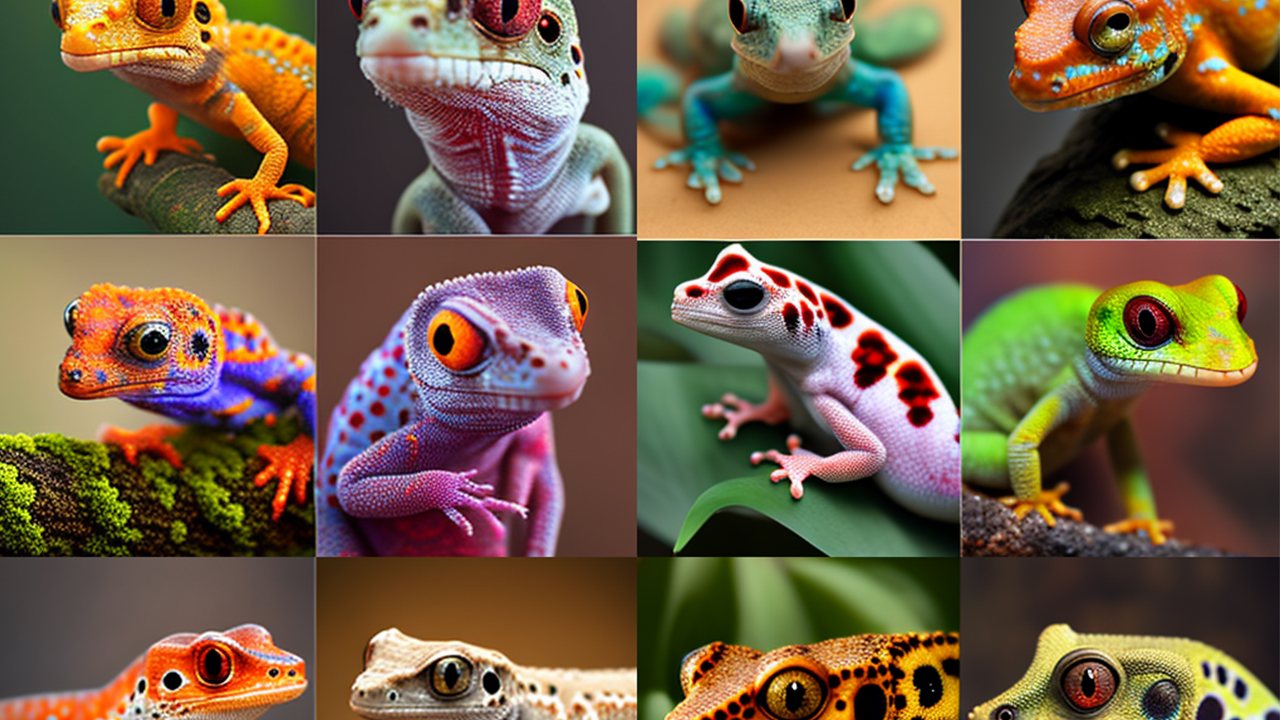In Florida’s diverse tapestry of fauna, manifold creatures grace its lands and waters. From the regal manatees to the formidable alligators, each plays a pivotal role. Yet, amidst this expanse, geckos claim a singular reverence, lithely skimming walls and terraces, epitomizing both finesse and alacrity. Within the borders of the Sunshine State, an ensemble of 15 unique gecko species awaits discovery.
For the ardent admirer of Mother Nature, the reptile enthusiast, or the curious soul yearning to delve into the myriad forms of life, this treatise serves as a portal to the mesmerizing world of the 15 gecko species indigenous to Florida.
Contents
- 1 The 15 Types of Geckos in Florida
- 1.1 1. Florida Sand Gecko
- 1.1.1 2. Ocellated Gecko
- 1.1.2 3. Mediterranean Gecko
- 1.1.3 4. Gold Dust Day Gecko
- 1.1.4 5. Mourning Gecko
- 1.1.5 6. Tokay Gecko
- 1.1.6 7. Brown Anole
- 1.1.7 8. Green Anole
- 1.1.8 9. Bark Anole
- 1.1.9 10. Golden Gecko
- 1.1.10 11. Yellow-Headed Gecko
- 1.1.11 12. Moorish Gecko
- 1.1.12 13. Ashy Gecko
- 1.1.13 14. Indo-Pacific Gecko
- 1.1.14 15. White-Spotted Wall Gecko
- 1.1 1. Florida Sand Gecko
The 15 Types of Geckos in Florida
1. Florida Sand Gecko
Scientific name: Plestiodon reynoldsi / Found In – Florida
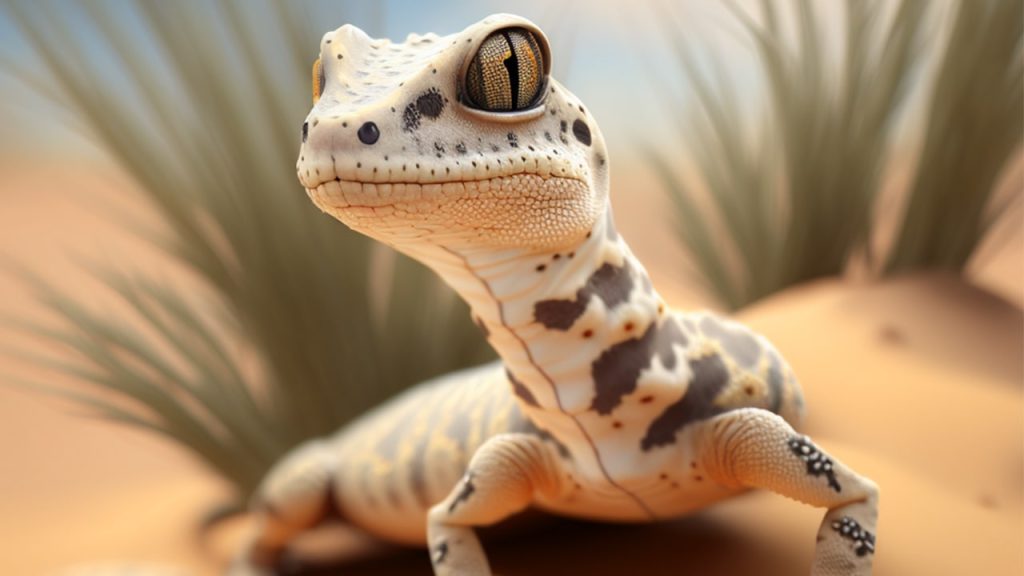
The Florida sand gecko, also known as the Southeastern sand gecko, is one of the most common types of geckos in Florida. These small lizards are usually brown or gray with a rough, sandpapery texture and distinctive black spots on their backs. They can be found in a variety of habitats, from sandy beaches to wooded areas.
2. Ocellated Gecko
Scientific name: Sphaerodactylus argus / Found In – Lower Florida Keys at dusk
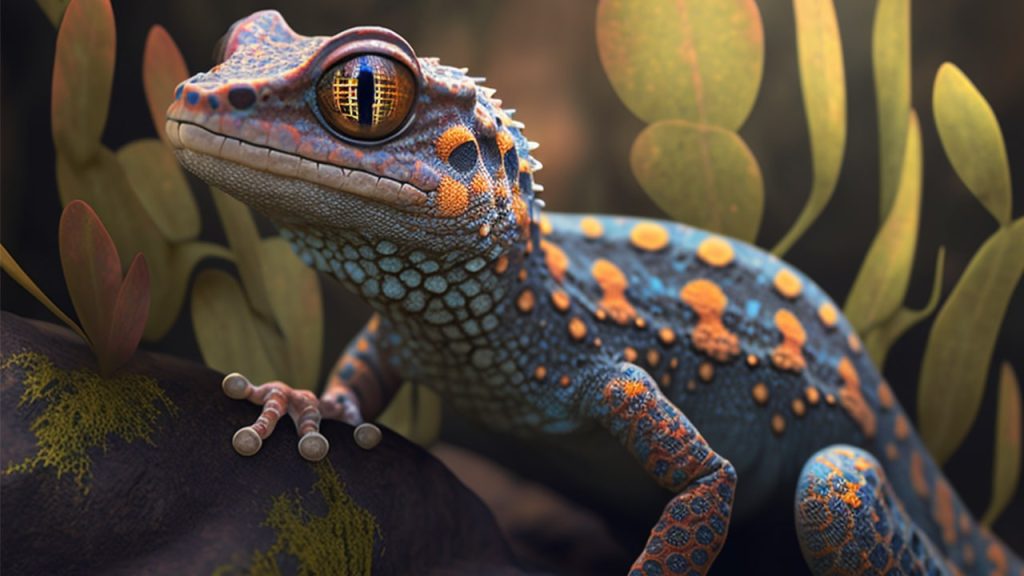
The ocellated gecko, also known as the banded gecko, is a small, colorful lizard that is native to the southern United States, including Florida. These geckos have a distinctive pattern of white and black bands on their bodies, and are often kept as pets.
3. Mediterranean Gecko
Scientific name: Hemidactylus turcicus / Found In – Key West, Florida
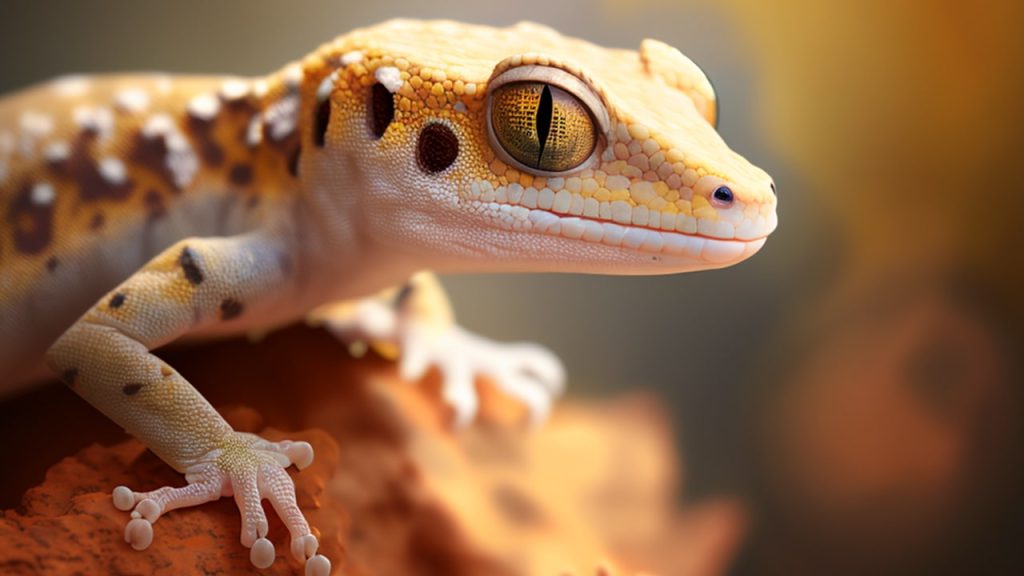
The Mediterranean gecko is a small, nocturnal lizard that is native to the Mediterranean region but has been introduced to Florida and other parts of the world. These geckos have a distinctive call that sounds like “geck-o,” and can often be heard at night.
4. Gold Dust Day Gecko
Scientific name: Phelsuma laticauda / Found In – Florida Keys

The gold dust day gecko is a small, colorful lizard that is native to Madagascar but has been introduced to Florida and other parts of the world. These geckos have bright green bodies with red or orange markings, and are often kept as pets.
5. Mourning Gecko
Scientific name: Lepidodactylus lugubris / Found In – Florida

The mourning gecko, also known as the dwarf gecko, is a small, nocturnal lizard that is native to the islands of the Indian Ocean but has been introduced to Florida and other parts of the world. These geckos are unusual in that they are parthenogenic, meaning that females can reproduce without mating with a male.
6. Tokay Gecko
Scientific name: Gekko Gecko / Found In – Southern Florida
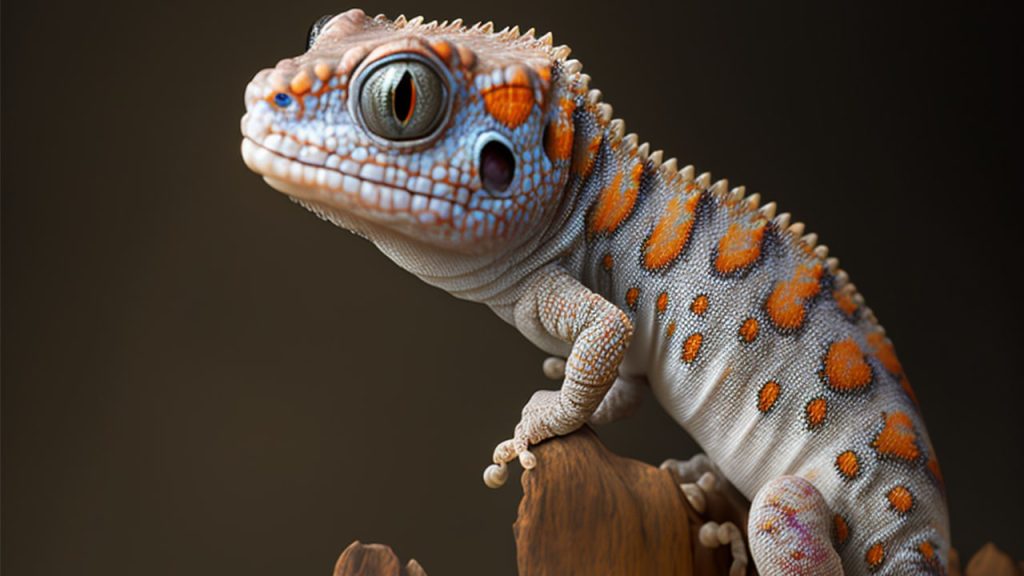
The tokay gecko is a large, nocturnal lizard that is native to Southeast Asia but has been introduced to Florida and other parts of the world. These geckos have a distinctive call that sounds like “to-kay,” and are often kept as pets.
7. Brown Anole
Scientific name: Anolis sagrei / Found In – Urban areas all over Florida
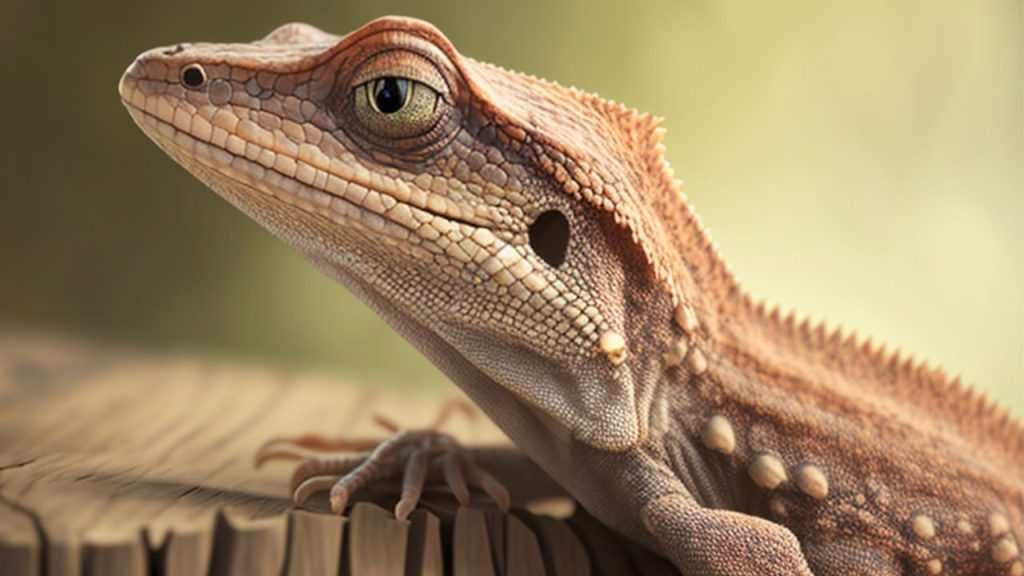
The brown anole, also known as the American chameleon, is a small, brown lizard that is native to Cuba and the Bahamas but has been introduced to Florida and other parts of the world. These lizards are often mistaken for chameleons because of their ability to change color, but they are not true chameleons.
8. Green Anole
Scientific name: Anolis carolinensis / Found In – Florida suburban areas
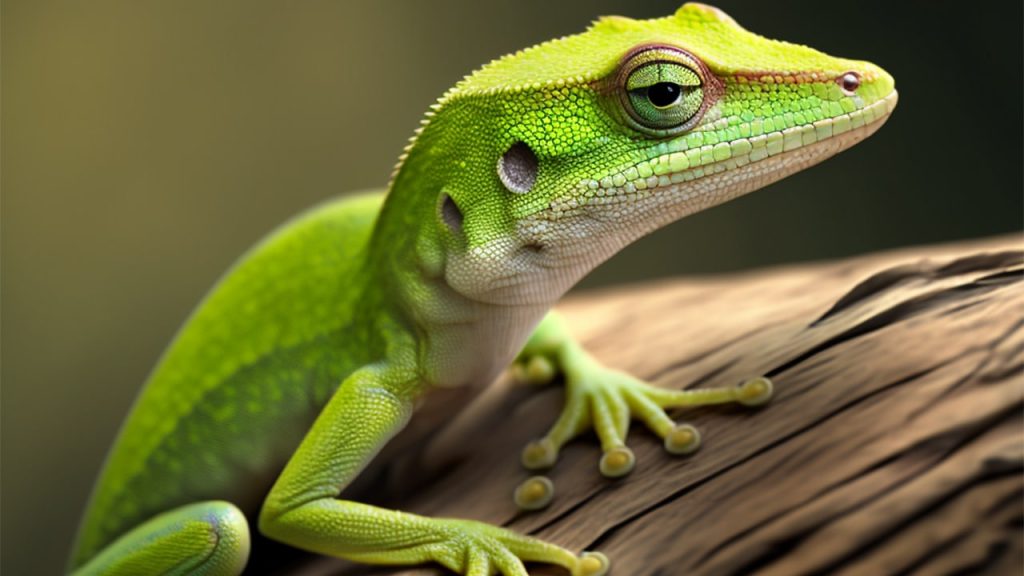
The green anole, also known as the American green anole, is a small, green lizard that is native to the southeastern United States, including Florida. These lizards are often kept as pets and are popular among reptile enthusiasts.
9. Bark Anole
The Bark Anole Gecko, scientifically known as Anolis sagrei, is a species of small lizard that is commonly found in Cuba and the Bahamas, but has also been introduced to other regions around the world, including Florida. These geckos are known for their ability to blend in with their surroundings, thanks to their rough, bumpy skin texture that mimics tree bark.
10. Golden Gecko
Golden geckos, also known as Gekko ulikovskii or the golden claw gecko, are one of the most visually stunning species of geckos. With their unique coloration and pattern, they have become a popular pet among reptile enthusiasts. In this article, we will provide an overview of the golden gecko, including their habitat, behavior, diet, and care requirements. We will also discuss some of the challenges involved in keeping these beautiful creatures as pets and how to overcome them.
11. Yellow-Headed Gecko
The Yellow Headed Gecko (Gonatodes albogularis) is a small to medium-sized lizard that belongs to the family of Gekkonidae. It is known for its unique and striking appearance, with a bright yellow head and a brown body covered in small white or yellow spots. They are native to South America (Florida), including Brazil, Guyana, Suriname, and Venezuela.
12. Moorish Gecko
The Moorish Gecko (Tarentola mauritanica) is a small to medium-sized lizard that belongs to the family of Phyllodactylidae. They are native to North Africa, Europe, and the Middle East and have been introduced to some parts of North America.
Moorish Geckos are typically around 4-5 inches in length, with a tail that is almost as long as their body. They have a distinctive appearance, with a flattened head and body covered in small, granular scales. They come in a range of colors, including shades of brown, grey, and yellow.
13. Ashy Gecko
The Ashy Gecko (Hemidactylus frenatus) is a small species of gecko that is native to Southeast Asia and parts of the Pacific. They are also commonly found in many other parts of the world as an invasive species, having been introduced by humans.
Ashy Geckos are small in size, typically growing up to 4 inches in length. They have a distinctively flattened body with small, granular scales. They come in a range of colors, including grey, brown, and tan, and are often speckled or patterned.
14. Indo-Pacific Gecko
The Indo-Pacific Gecko (Hemidactylus garnotii) is a small to medium-sized gecko that is native to Southeast Asia and the Pacific Islands. They are also commonly found in many other parts of the world as an introduced species.
Indo-Pacific Geckos are typically around 3-6 inches in length, with a flattened body covered in small, granular scales. They come in a range of colors, including shades of brown, grey, and green, and may have patterns or stripes.
15. White-Spotted Wall Gecko
The White-Spotted Wall Gecko (Tarentola annularis) is a small to medium-sized species of gecko that is native to North Africa and the Middle East. They are often found living in urban areas, including cities and towns.
White-Spotted Wall Geckos typically grow to be around 5-6 inches in length, with a flattened body covered in small, granular scales. They have a distinctive appearance, with white spots on their back and a tail that is almost as long as their body. They come in a range of colors, including shades of grey, brown, and tan.
FAQs:
Q: Are geckos good pets?
A: Yes, geckos can make great pets for the right owner. However, it’s important to research the specific species before getting a gecko and ensure you can provide adequate care.
Q: What temperature do geckos need?
A: The temperature requirements can vary depending on the species. Generally, geckos require a temperature range of 75-85 degrees Fahrenheit.
Q: How often should I feed my gecko?
A: Geckos should be fed appropriately sized insects every 2-3 days. Some species may require more frequent feedings.
In conclusion,
geckos are fascinating creatures with a wide variety of appearances and behaviors. Whether you’re interested in keeping a gecko as a pet or just appreciate their beauty, it’s important to research the specific species and provide them with adequate care. By understanding the different types of geckos and their unique characteristics, we can better appreciate the wonder and diversity of these amazing reptiles. Whether it’s the friendly and easy-to-care-for leopard gecko, the arboreal and unique-looking crested gecko, or the colorful and vocal Tokay gecko, there’s a type of gecko out there for everyone to admire and enjoy.

